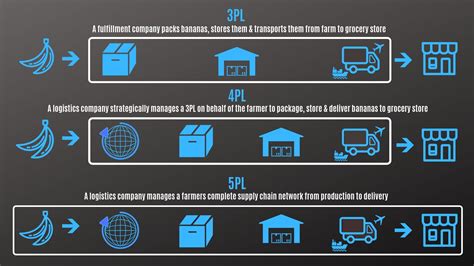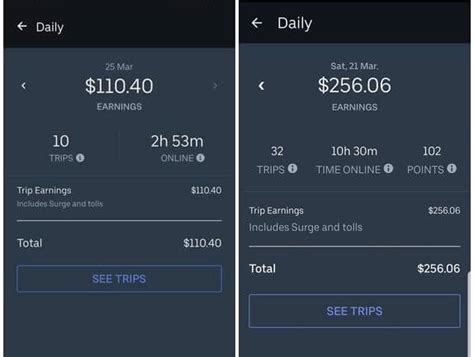3Pl 4Pl Logistics

In today's globalized economy, efficient supply chain management is paramount for businesses to thrive and remain competitive. One of the critical aspects of supply chain optimization is the effective integration of 3PL (Third-Party Logistics) and 4PL (Fourth-Party Logistics) services. This article delves into the intricacies of 3PL and 4PL logistics, exploring their definitions, roles, benefits, and the future trends that are shaping these industries.
Understanding 3PL and 4PL Logistics

The logistics industry has evolved significantly, giving rise to specialized services that cater to the diverse needs of businesses. 3PL logistics and 4PL logistics are two such services that have gained prominence in recent years.
3PL Logistics: Unlocking Supply Chain Efficiency
Third-Party Logistics, or 3PL, refers to outsourcing logistics functions to a specialized provider. This can encompass a wide range of services, including transportation, warehousing, inventory management, and distribution. By leveraging 3PL services, businesses can focus on their core competencies while relying on experts to handle their logistics operations.
For instance, consider a retail company that wants to expand its e-commerce business. By partnering with a 3PL provider, the retailer can benefit from the provider’s expertise in managing inventory, ensuring timely deliveries, and optimizing the supply chain. This enables the retailer to streamline its operations, reduce costs, and provide a seamless shopping experience to its customers.
Key benefits of 3PL logistics include:
- Cost Savings: Outsourcing logistics operations can reduce overhead costs for businesses, as they no longer need to invest in extensive infrastructure and resources.
- Expertise and Scalability: 3PL providers offer specialized knowledge and resources, allowing businesses to scale their operations efficiently without compromising quality.
- Improved Customer Service: With optimized logistics, businesses can enhance their delivery processes, leading to faster and more reliable service for customers.
4PL Logistics: Revolutionizing Supply Chain Management
Fourth-Party Logistics, or 4PL, takes the concept of outsourcing logistics a step further. While 3PL focuses on individual logistics functions, 4PL involves the integration and management of the entire supply chain. 4PL providers act as a single point of contact, coordinating and managing multiple 3PL providers and other supply chain partners.
Imagine a multinational manufacturing company with a complex supply chain involving multiple suppliers, transportation modes, and distribution centers. A 4PL provider can step in to oversee the entire supply chain, ensuring efficient coordination, visibility, and optimization of all logistics processes. This holistic approach allows the manufacturer to focus on its core business while enjoying the benefits of a streamlined and integrated supply chain.
The advantages of 4PL logistics are numerous:
- End-to-End Supply Chain Management: 4PL providers offer a comprehensive solution, managing the entire supply chain from procurement to delivery, reducing complexity for businesses.
- Enhanced Visibility and Control: With a single point of contact, businesses gain better visibility into their supply chain, enabling real-time monitoring and control over logistics operations.
- Strategic Supply Chain Planning: 4PL providers can analyze and optimize the supply chain, identifying areas for improvement and implementing strategic initiatives to enhance overall efficiency.
The Benefits and Applications of 3PL and 4PL Logistics

The adoption of 3PL and 4PL logistics offers a myriad of benefits to businesses across various industries. Let’s explore some of the key advantages and real-world applications of these services.
Cost Efficiency and Resource Optimization
One of the most significant advantages of outsourcing logistics functions is the potential for substantial cost savings. By partnering with 3PL or 4PL providers, businesses can leverage the economies of scale and specialized expertise to optimize their supply chain operations.
For example, a small e-commerce startup may lack the resources and infrastructure to manage its logistics effectively. By engaging a 3PL provider, the startup can benefit from the provider’s established network of warehouses, transportation services, and technology, resulting in reduced operational costs and improved efficiency.
Furthermore, 4PL logistics can bring about even greater cost efficiencies by consolidating and optimizing the entire supply chain. A 4PL provider can negotiate favorable rates with multiple 3PL providers, transportation companies, and other supply chain partners, passing on the savings to the business.
Enhanced Customer Experience and Satisfaction
In today’s competitive market, delivering an exceptional customer experience is crucial for businesses to thrive. 3PL and 4PL logistics play a vital role in enhancing customer satisfaction by ensuring timely and reliable deliveries.
Consider a fashion retailer that wants to expand its online presence and offer same-day delivery to customers. By partnering with a 3PL provider that specializes in last-mile delivery, the retailer can guarantee faster and more convenient deliveries, meeting customer expectations. This level of service can significantly boost customer loyalty and repeat business.
Similarly, 4PL logistics can further enhance the customer experience by providing end-to-end visibility and control over the supply chain. Customers can track their orders in real-time, receive accurate delivery estimates, and even provide feedback on their experience. This level of transparency and engagement can foster a deeper connection between the business and its customers.
Scalability and Flexibility in Supply Chain Operations
The dynamic nature of today’s business landscape requires supply chains to be agile and adaptable. 3PL and 4PL logistics provide businesses with the flexibility to scale their operations quickly and efficiently.
For instance, a technology company may experience sudden spikes in demand for its products during certain seasons or following new product launches. By leveraging 3PL services, the company can rapidly expand its warehousing and distribution capabilities to meet the increased demand without incurring significant overhead costs. This flexibility allows the business to maintain a competitive edge and respond swiftly to market fluctuations.
4PL logistics takes scalability to the next level by offering a comprehensive supply chain solution. A 4PL provider can quickly adapt and optimize the entire supply chain to accommodate changes in demand, production capacity, or market conditions. This ensures that businesses can maintain a consistent and reliable supply of goods to meet customer needs, even during periods of high volatility.
Risk Mitigation and Supply Chain Resilience
Supply chains are vulnerable to various risks, including natural disasters, geopolitical events, and disruptions in transportation or production. 3PL and 4PL logistics can help businesses mitigate these risks and enhance supply chain resilience.
By outsourcing logistics functions to specialized providers, businesses can benefit from their extensive networks and backup plans. For example, a 3PL provider may have multiple warehouses strategically located across different regions, allowing for quick diversion of goods in case of a disruption in one location. This redundancy ensures that the supply chain remains operational and minimizes the impact of unexpected events.
4PL logistics further strengthens supply chain resilience by providing a centralized management system. A 4PL provider can identify potential risks and develop contingency plans, ensuring that the entire supply chain is prepared for any eventuality. This proactive approach helps businesses maintain a continuous flow of goods and minimize the impact of disruptions on their operations and customers.
Future Trends in 3PL and 4PL Logistics
As technology continues to advance and business needs evolve, the logistics industry is undergoing significant transformations. Let’s explore some of the future trends that are shaping 3PL and 4PL logistics.
Digital Transformation and Automation
The digital revolution is transforming the logistics industry, with technology playing a pivotal role in optimizing supply chain operations. 3PL and 4PL providers are increasingly adopting digital solutions and automation to enhance efficiency, visibility, and control.
Advanced analytics and artificial intelligence (AI) are being leveraged to optimize routing, inventory management, and demand forecasting. For example, AI-powered algorithms can analyze historical data and real-time information to predict demand patterns and optimize inventory levels, reducing costs and minimizing stockouts. Additionally, digital platforms and mobile applications are being used to provide real-time visibility and tracking, allowing businesses and customers to monitor the progress of their shipments.
Automation is also making its way into warehouses and distribution centers, with the use of robotics and automated guided vehicles (AGVs) becoming more prevalent. These technologies can improve accuracy, speed, and safety in warehousing operations, reducing labor costs and increasing productivity.
Sustainability and Green Logistics
As environmental concerns continue to rise, businesses are increasingly focusing on sustainability and reducing their carbon footprint. 3PL and 4PL logistics providers are responding to this trend by adopting green logistics practices.
This includes optimizing transportation routes to reduce fuel consumption and emissions, adopting electric or hybrid vehicles, and implementing eco-friendly packaging solutions. Additionally, 3PL and 4PL providers are exploring innovative ways to reduce waste, such as implementing reverse logistics for product returns and recycling programs.
By embracing sustainability, logistics providers can not only contribute to a greener planet but also appeal to environmentally conscious consumers and businesses. This aligns with the growing trend of corporate social responsibility (CSR) and can enhance a company’s brand image and reputation.
Collaborative Logistics and Supply Chain Integration
The future of logistics lies in collaboration and integration. 3PL and 4PL providers are recognizing the benefits of working closely with other supply chain partners to create a seamless and efficient ecosystem.
Collaborative logistics involves sharing resources, information, and best practices among different supply chain stakeholders. This can lead to improved coordination, reduced costs, and enhanced visibility. For example, a 3PL provider may collaborate with a transportation company to optimize delivery routes, resulting in faster and more efficient deliveries.
Supply chain integration, facilitated by 4PL providers, takes collaboration to the next level. By integrating the entire supply chain, businesses can achieve end-to-end visibility and control, enabling them to make data-driven decisions and optimize their operations across the board. This level of integration can lead to significant improvements in efficiency, cost reduction, and customer satisfaction.
E-commerce and Last-Mile Delivery
The rapid growth of e-commerce has revolutionized the logistics industry, with a particular focus on last-mile delivery. 3PL and 4PL providers are playing a crucial role in meeting the challenges and opportunities presented by e-commerce.
E-commerce businesses often require specialized logistics solutions, such as flexible delivery options, real-time tracking, and personalized customer experiences. 3PL providers are adapting their services to meet these needs, offering last-mile delivery solutions that include same-day, next-day, or even drone-based deliveries. This level of service can significantly enhance customer satisfaction and loyalty.
4PL providers, with their holistic approach, can further optimize the e-commerce supply chain. By integrating multiple 3PL providers and other supply chain partners, 4PLs can ensure a seamless flow of goods from the warehouse to the customer’s doorstep. This level of coordination and efficiency is crucial in meeting the demanding expectations of online shoppers.
Technology-Driven Innovation
The logistics industry is embracing technological innovations to stay ahead of the curve and meet the evolving needs of businesses and consumers. Here are some key technology-driven trends that are shaping the future of 3PL and 4PL logistics:
- Blockchain Technology: Blockchain offers a secure and transparent way to track and trace goods throughout the supply chain. It can enhance visibility, improve data integrity, and reduce the risk of fraud or errors.
- Internet of Things (IoT): IoT devices and sensors are being used to monitor and optimize logistics operations. From tracking inventory levels in real-time to monitoring the condition of perishable goods during transit, IoT is revolutionizing supply chain management.
- Drones and Autonomous Vehicles: The use of drones and autonomous vehicles is gaining traction in the logistics industry. These technologies can revolutionize last-mile delivery, especially in remote or hard-to-reach areas, and improve efficiency in warehousing and inventory management.
- Augmented Reality (AR) and Virtual Reality (VR): AR and VR technologies are being leveraged to enhance training and workflow optimization in logistics. They can provide immersive experiences for employees, improving their efficiency and reducing errors.
- Robotics and Automation: Robotics is transforming warehousing and distribution centers, improving accuracy, speed, and safety. From automated guided vehicles (AGVs) to robotic arms, these technologies are streamlining logistics operations and reducing labor costs.
Conclusion: Navigating the Future of Logistics
As we navigate the ever-evolving landscape of logistics, it is clear that 3PL and 4PL services are playing a pivotal role in shaping the future of supply chain management. The benefits of outsourcing logistics functions, from cost savings to enhanced customer satisfaction, are undeniable. Additionally, the future trends in 3PL and 4PL logistics, such as digital transformation, sustainability, and collaborative efforts, are poised to further revolutionize the industry.
By embracing these trends and staying abreast of the latest innovations, businesses can position themselves at the forefront of logistics excellence. Whether it’s leveraging technology to optimize operations, adopting green logistics practices, or collaborating with supply chain partners, the future of logistics is bright and full of opportunities. With the right strategies and partnerships, businesses can ensure their supply chains remain efficient, resilient, and responsive to the dynamic needs of the market.
How do I choose the right 3PL or 4PL provider for my business?
+Selecting the right 3PL or 4PL provider is crucial for the success of your logistics operations. Here are some key factors to consider:
- Assess your specific logistics needs and requirements.
- Research and compare multiple providers, evaluating their expertise, resources, and track record.
- Consider their ability to scale and adapt to your business growth.
- Evaluate their technology and automation capabilities.
- Inquire about their sustainability practices and commitment to environmental responsibility.
- Seek references and testimonials from their existing clients.
- Negotiate favorable terms and rates that align with your budget and expectations.
Remember, the right 3PL or 4PL provider should be a trusted partner that can help you optimize your supply chain and achieve your business goals.
What are the key differences between 3PL and 4PL logistics services?
+3PL and 4PL logistics services differ in their scope and level of integration. Here’s a breakdown:
- 3PL (Third-Party Logistics):
- Focuses on individual logistics functions, such as transportation, warehousing, and distribution.
- Provides specialized expertise and resources for specific supply chain processes.
- Offers cost savings and improved efficiency for businesses.
- 4PL (Fourth-Party Logistics):
- Involves the integration and management of the entire supply chain.
- Acts as a single point of contact, coordinating multiple 3PL providers and supply chain partners.
- Offers end-to-end supply chain management, enhanced visibility, and strategic planning.
In summary, 3PL provides specialized logistics services, while 4PL takes a holistic approach to supply chain management.
How can 3PL and 4PL logistics benefit small and medium-sized enterprises (SMEs)?
+3PL and 4PL logistics can be particularly advantageous for SMEs as they often lack the resources and expertise to manage complex logistics operations. Here’s how these services can benefit SMEs:
- Cost Efficiency: Outsourcing logistics functions can reduce overhead costs, allowing SMEs to allocate resources to other critical areas of their business.
- Expertise and Scalability: 3PL and 4PL providers offer specialized knowledge and resources, enabling SMEs to scale their operations efficiently without incurring significant infrastructure costs.
- Improved Customer Service: With optimized logistics, SMEs can enhance their delivery processes, leading to faster and more reliable service, which is crucial for customer satisfaction and retention.
- Focus on Core Business: By outsourcing logistics, SMEs can focus on their core competencies, innovation, and growth strategies, leaving the logistics management to the experts.



